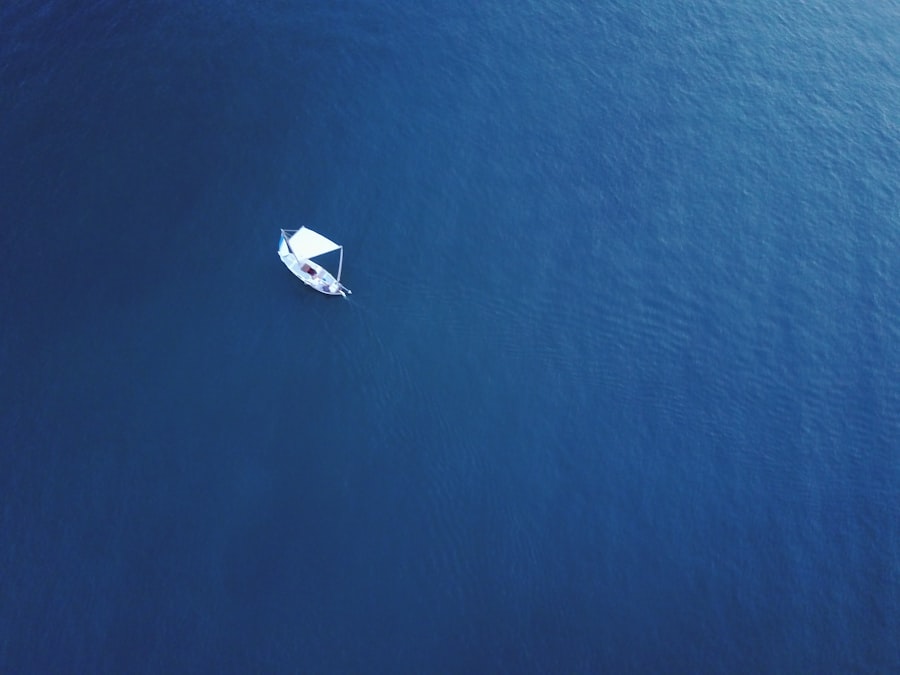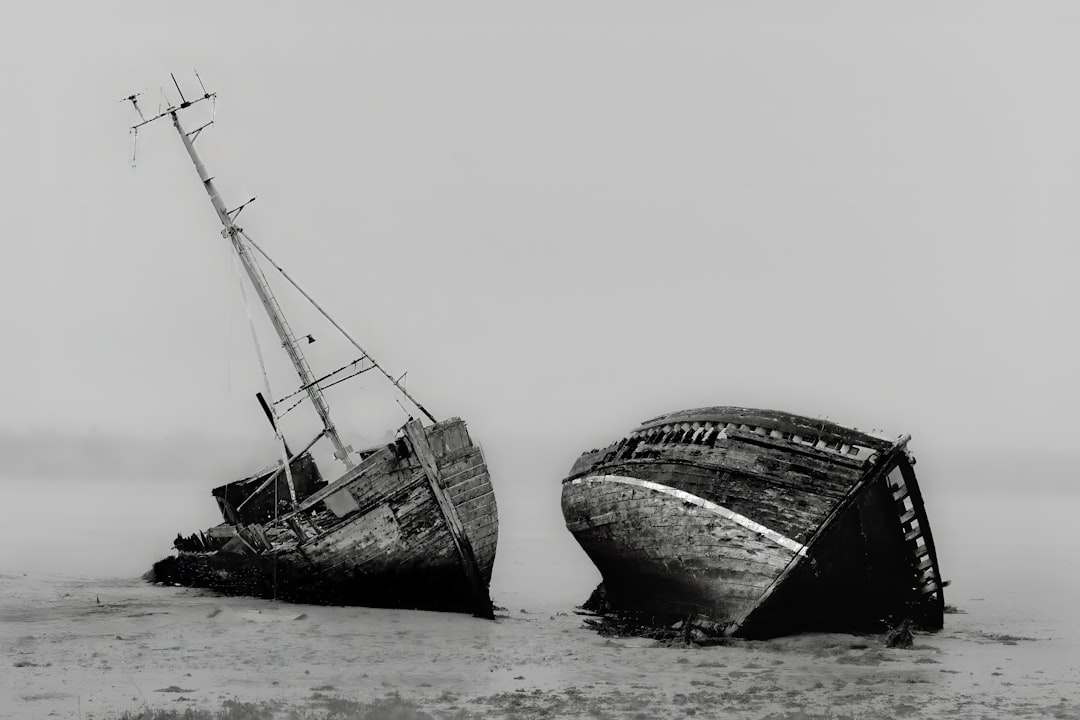The Drake Passage, a body of water situated between the southern tip of South America and Antarctica, is renowned for its tumultuous seas and unpredictable weather patterns. Spanning approximately 600 kilometers, this passage serves as a critical maritime route for vessels traveling to and from the Antarctic region. The confluence of the Atlantic and Pacific Oceans creates a unique environment characterized by strong currents, high winds, and large swells, making it one of the most challenging waterways for sailors and adventurers alike.
The passage is not only significant for its geographical features but also for its ecological importance, as it serves as a migratory route for various marine species. Navigating the Drake Passage requires a deep understanding of its complexities. The region is often referred to as the “Drake Shake” due to the violent storms that can arise with little warning.
These storms can produce waves that reach heights of over 10 meters, posing a significant threat to vessels traversing the area. Additionally, the passage is home to a diverse array of wildlife, including whales, seals, and seabirds, which adds to its allure for researchers and nature enthusiasts. However, the beauty of the Drake Passage is often overshadowed by its reputation for danger, making it essential for anyone planning to sail through these waters to be well-prepared and informed.
Key Takeaways
- The Drake Passage is a treacherous body of water between South America and Antarctica known for its unpredictable and violent weather conditions.
- Sinking in the Drake Passage poses significant risks due to the frigid waters, strong currents, and remote location, making rescue difficult.
- Preparing for a sinking ship scenario in the Drake Passage involves familiarizing oneself with emergency procedures and practicing drills.
- Essential survival skills for the Drake Passage include cold water immersion techniques, hypothermia prevention, and basic first aid.
- Emergency equipment and supplies such as life rafts, emergency beacons, and survival suits are crucial for increasing chances of rescue in the Drake Passage.
The Risks of Sinking in the Drake Passage
The risks associated with sailing in the Drake Passage are numerous and varied. One of the most pressing dangers is the potential for severe weather conditions that can lead to capsizing or sinking. Sudden storms can arise without warning, creating treacherous waves and strong winds that can overwhelm even the most seaworthy vessels.
Additionally, the cold temperatures of the water can pose a significant risk to crew members who may find themselves in the water due to an accident. Hypothermia can set in quickly, making survival increasingly difficult. Another risk factor is the presence of icebergs and sea ice in the region.
While many vessels are equipped to handle rough seas, they may not be prepared for encounters with floating ice. Collisions with icebergs can cause catastrophic damage to a ship’s hull, leading to rapid sinking. Furthermore, the isolation of the Drake Passage means that rescue operations can be complicated and time-consuming, increasing the stakes for those who find themselves in distress.
Understanding these risks is crucial for anyone venturing into this formidable maritime environment.
Preparing for a Sinking Ship Scenario

Preparation is key when it comes to mitigating the risks associated with sailing in the Drake Passage.
This includes understanding how to operate life rafts, life jackets, and other safety equipment.
Regular training sessions can help instill confidence in crew members and ensure that everyone knows their role in the event of an emergency. In addition to training, it is essential to equip the vessel with adequate safety gear. This includes life rafts that are properly maintained and easily accessible, as well as emergency beacons that can signal for help if needed.
A well-stocked first aid kit is also vital, as injuries can occur during rough weather or accidents at sea. By taking these proactive measures, sailors can significantly increase their chances of survival should a sinking scenario arise.
Essential Survival Skills for Drake Passage
| Skill | Description |
|---|---|
| Navigation | Ability to use maps, compass, and GPS to navigate through the challenging waters of Drake Passage. |
| Seamanship | Understanding of boat handling, sail trimming, and knowledge of sea conditions to ensure safe passage. |
| Cold Water Survival | Skills to survive in cold water, including hypothermia prevention and rescue techniques. |
| Emergency Communication | Knowledge of emergency communication devices and procedures to call for help if needed. |
| First Aid | Ability to provide basic first aid in remote and challenging conditions. |
Survival skills are paramount when navigating the unpredictable waters of the Drake Passage. One of the most critical skills is the ability to stay afloat in cold water. Crew members should be trained in techniques such as treading water and using flotation devices effectively.
Understanding how to conserve energy while waiting for rescue is also essential, as prolonged exposure to cold water can lead to rapid deterioration of physical condition. Another vital skill is navigation without traditional tools. In case of equipment failure or loss during an emergency, sailors should be familiar with celestial navigation techniques or how to use natural landmarks for guidance.
This knowledge can be invaluable when trying to reach safety or signal for help. Additionally, basic first aid skills are crucial; knowing how to treat injuries or illnesses can make a significant difference in survival situations.
Emergency Equipment and Supplies
Having the right emergency equipment on board can mean the difference between life and death in a sinking scenario. Essential supplies include life jackets for every crew member, which should be easily accessible at all times. Life rafts are another critical component; they should be equipped with survival kits containing food, water, signaling devices, and first aid supplies.
Regular inspections of this equipment are necessary to ensure that everything is in working order when needed. In addition to life-saving gear, communication devices play a vital role in emergencies. Vessels should be equipped with satellite phones or emergency beacons that can send distress signals even in remote areas.
Flares and other signaling devices are also important for attracting attention from passing ships or aircraft during rescue operations. By ensuring that all emergency equipment is readily available and functional, sailors can enhance their chances of survival in dire situations.
Communication and Signaling for Rescue

Effective communication is crucial during emergencies at sea, particularly in a challenging environment like the Drake Passage. When a vessel is in distress, it is essential to communicate its location clearly and accurately. This can be achieved through radio transmissions or by using emergency beacons that send distress signals to nearby vessels or rescue services.
Crew members should be trained in how to use these devices effectively and understand the importance of remaining calm while relaying information. In addition to electronic communication methods, visual signaling techniques are also vital. Flares can be used to attract attention from distant ships or aircraft, while reflective materials can help increase visibility during daylight hours.
Crew members should practice these signaling techniques regularly so that they are prepared to act quickly in an emergency situation. The ability to communicate effectively can significantly improve the chances of a successful rescue operation.
Staying Calm and Focused in a Crisis
In any crisis situation, maintaining composure is essential for effective decision-making and survival. Panic can lead to poor choices and exacerbate an already dangerous situation. Crew members should be trained in stress management techniques that help them remain calm under pressure.
Breathing exercises or visualization techniques can assist individuals in regaining focus when faced with overwhelming circumstances. Additionally, establishing clear roles and responsibilities among crew members can help create a sense of order during chaotic situations.
Encouraging open communication among crew members fosters teamwork and support, which can be invaluable when navigating through crises.
Building and Sustaining Shelter
In the event of a sinking ship scenario where crew members find themselves in lifeboats or on rafts, building and sustaining shelter becomes crucial for survival. While life rafts provide some protection from the elements, additional measures may be necessary to enhance comfort and safety. Crew members should be familiar with techniques for creating makeshift shelters using available materials such as tarps or clothing.
Sustaining shelter also involves protecting against exposure to harsh weather conditions. Crew members should know how to insulate themselves from cold temperatures using layers of clothing or blankets if available. Understanding how to create windbreaks using natural materials or equipment on board can help shield against strong winds and rain, increasing chances of survival until rescue arrives.
Finding and Purifying Water
Accessing clean drinking water is one of the most critical aspects of survival at sea. In a sinking scenario where crew members may find themselves adrift for extended periods, knowing how to find and purify water becomes essential. Rainwater collection is one method; crew members should be trained in how to use containers effectively during rainfall to gather fresh water.
If rainwater is not available, crew members may need to rely on seawater distillation techniques or other methods of purification if they have access to equipment such as solar stills or improvised filtration systems. Understanding these techniques ensures that individuals do not succumb to dehydration while awaiting rescue.
Hunting and Gathering Food
While food may not be an immediate concern in a sinking scenario compared to water, having knowledge about hunting and gathering food can provide sustenance during prolonged periods at sea. Crew members should be familiar with fishing techniques using improvised tools or nets if available on board. Understanding local marine life can also aid in identifying edible species.
In addition to fishing, crew members should know how to forage for edible plants or seaweed if they find themselves on land after abandoning ship. Knowledge about nutrition and food preservation methods will help ensure that any gathered food remains safe for consumption until rescue arrives.
Navigating the Drake Passage to Safety
Navigating back to safety after experiencing a sinking scenario requires careful planning and execution. Crew members must assess their surroundings and determine their best course of action based on available resources and conditions at sea. If they have access to navigational tools such as compasses or maps, they should utilize them effectively while also considering natural landmarks.
In cases where traditional navigation tools are unavailable, crew members should rely on their training in celestial navigation or use environmental cues such as wind direction or ocean currents to guide them toward safety. Remaining vigilant about changing weather patterns will also play a crucial role in ensuring successful navigation through the treacherous waters of the Drake Passage. In conclusion, understanding the complexities of the Drake Passage is essential for anyone venturing into its waters.
The risks associated with sailing through this region cannot be overstated; however, with proper preparation and knowledge of survival skills, individuals can significantly enhance their chances of overcoming challenges posed by this formidable maritime environment. By equipping themselves with essential emergency supplies, honing communication skills for rescue scenarios, maintaining composure during crises, and mastering navigation techniques, sailors can navigate their way back to safety even in the face of adversity.
In recent maritime news, the Drake Passage has been the site of a tragic ship sinking, raising concerns about the safety of vessels navigating this treacherous stretch of water. The Drake Passage, known for its unpredictable weather and rough seas, has long been a challenge for sailors. For those interested in learning more about the geographical and historical significance of this region, an insightful article can be found on MyGeoQuest. This article delves into the unique characteristics of the Drake Passage and its impact on maritime travel. You can read more about it by visiting this page.
WATCH NOW! Drake Passage: Earth’s Deadliest Waters Revealed
FAQs
What is the Drake Passage?
The Drake Passage is the body of water between the southern tip of South America and the northern tip of the Antarctic Peninsula. It is known for its rough seas and challenging sailing conditions.
What is the likelihood of a ship sinking in the Drake Passage?
While the Drake Passage is known for its rough seas, modern ships are built to withstand these conditions. The likelihood of a ship sinking in the Drake Passage is very low, as long as the ship is well-maintained and operated by a competent crew.
What are the common causes of ship sinkings in the Drake Passage?
Common causes of ship sinkings in the Drake Passage include extreme weather conditions, such as strong winds and high waves, as well as navigational errors or mechanical failures.
What safety measures are in place for ships traveling through the Drake Passage?
Ships traveling through the Drake Passage are required to adhere to strict safety regulations, including carrying appropriate safety equipment, conducting regular safety drills, and following established navigational routes.
What should passengers do in the event of a ship sinking in the Drake Passage?
Passengers on a sinking ship in the Drake Passage should follow the instructions of the ship’s crew, don life jackets, and evacuate the ship in an orderly manner. It is important to remain calm and follow safety procedures to maximize the chances of survival.
